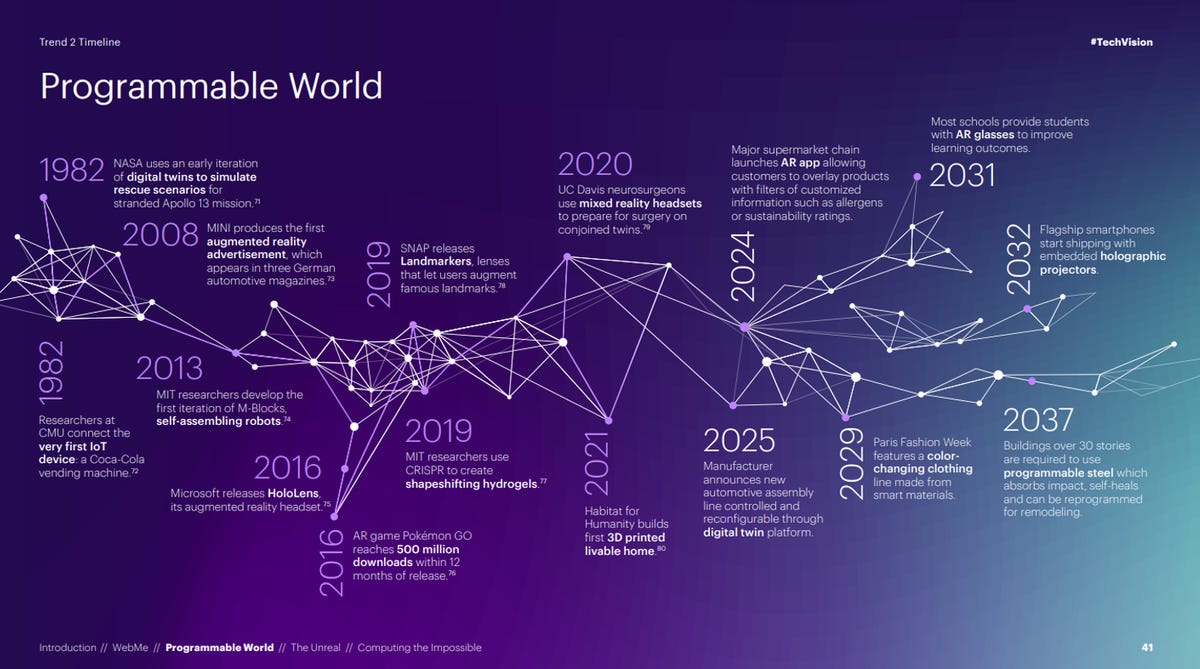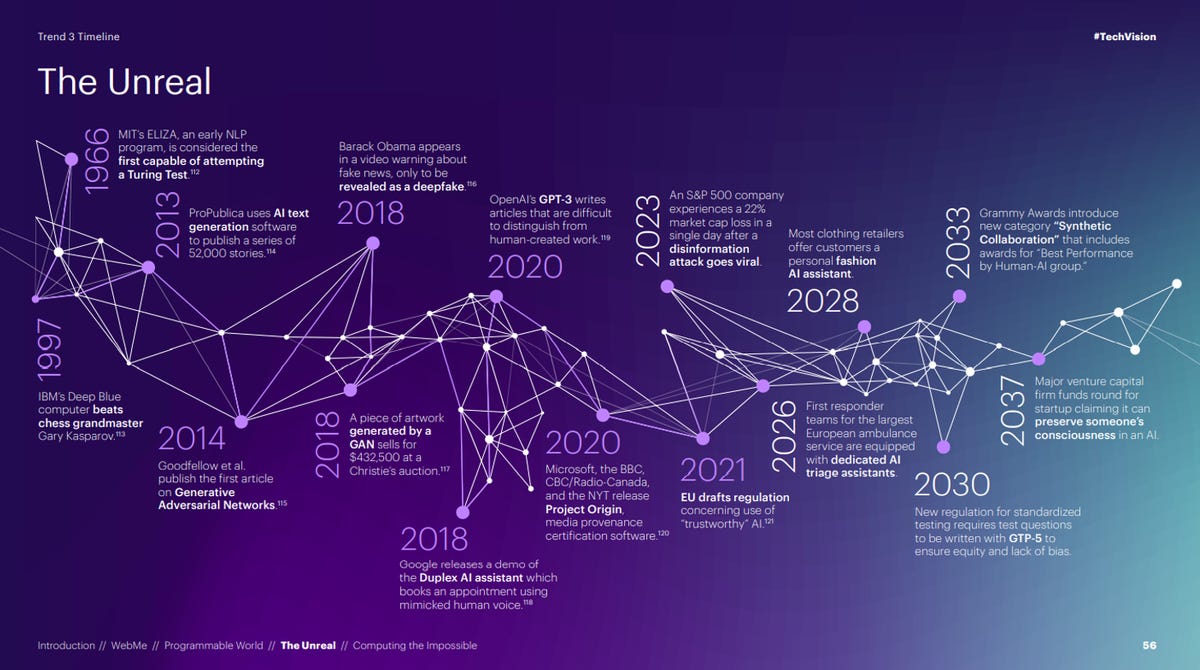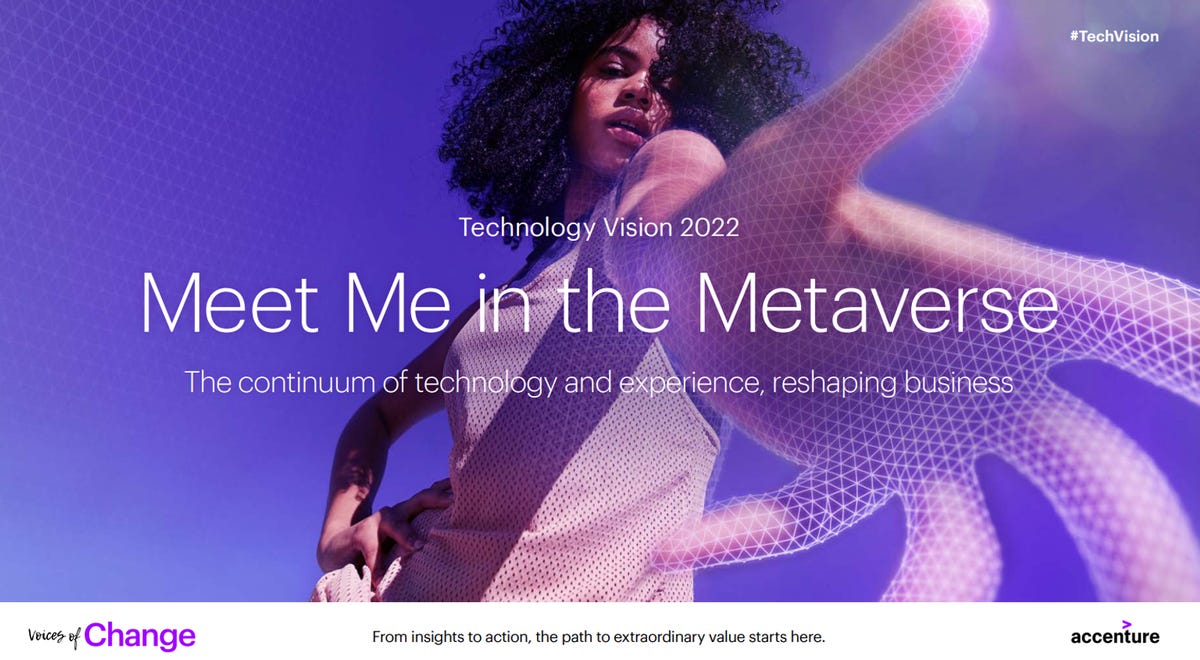
The Accenture Technology Vision 2022 report states that businesses are racing toward a future very different from the one they were designed to operate in. Is your business ready for the Metaverse? Accenture believes that the Metaverse is actionable today, and leaders must be ready. ” Welcome to the “Metaverse Continuum” — a spectrum of digitally enhanced worlds, realities, and business models poised to revolutionize life and enterprise in the next decade,” Accenture.
According to the report, 98% of executives believe continuous technological advances are becoming more reliable than economic, political, or social trends in informing their organization’s long-term strategy. While 14% of executives report, the COVID-19 pandemic continues to disrupt their organization’s business plans and operations, another 86% report that their organization has adapted to the disruption of the pandemic and has found a new normal.
The Technology Vision 2022 report explores how today’s technology innovations are becoming the building blocks of our collective future. The trends investigate the entire continuum, from the virtual to the physical, across humans and machines alike, identifying where ambitious enterprises can find rich opportunity by uprooting themselves from today and planting themselves firmly in the future.
The Technology Vision 2022 four technology trends are:
- WebMe: Putting the Me in Metaverse. The internet is being reimagined as Metaverse, and Web3 efforts transform the underpinning and operation of the virtual world. WebMe looks at how the internet is being reimagined.
- Programmable World: Our Planet, Personalized. Control, customization, and automation are being enmeshed into the world around us, making the physical as programmable as the digital. Programmable World tracks how technology exists in our physical environments in increasingly sophisticated ways.
- The Unreal: Making Synthetic, Authentic. As AI-generated data and synthetic content convincingly mimic what is “real,” authenticity is the new north star. The emergence of The Unreal — a trend where our environments are increasingly filled with machines that are passably human. “Unreal” qualities are becoming intrinsic to the AI, and even the data, that enterprises are using.
- Computing the Impossible: New Machines, New Possibilities. A new generation of computers is solving some of the world’s most intractable problems, leading to one of the biggest technological disruptions of our time. The outer limit of what is computationally possible is being disrupted as a new class of machines emerges. Quantum, biologically inspired, and high-performance computers are each allowing companies to tackle the biggest challenges in their industries.
Excited to share #TechVision 2022: Meet Me in the Metaverse. We present a very different view – the Metaverse Continuum – that cuts through the #metaverse hype, demystifies the mythology, and outlines a clear path forward – starting today. https://t.co/TzlrcwHg5I
— Paul Daugherty (@pauldaugh) March 16, 2022
Here’s a deeper look at these four technology trends:
WebMe: Putting the Me in Metaverse
The internet is being reimagined, and enterprises need to be ready for what comes next. With so much attention being paid to the future of the internet, it is critical leaders have a firm understanding of the new concepts emerging and their implications. While many technologies and efforts are encompassed by what Accenture defines as the “Metaverse Continuum,” thought leaders in this space often have different definitions (some complementary, some contradictory) for the various ideas, and the fuzziness of the different terms at play can make discussions tricky.
Accenture sees the Metaverse as “an evolution of the internet that enables a user to move beyond browsing to inhabiting and/ or participating in a persistent shared experience that spans the spectrum of our real world to the fully virtual and in between.” While Web3 is an evolving term, Accenture used it to refer to the emerging initiatives that are leveraging technologies like blockchain and tokenization to build a more distributed data layer into the internet. Accenture notes that 71% of global executives state that the Metaverse will positively impact their organizations, with 42% believing it will be a breakthrough or transformational.
There is a converging of our digital future. “It’s useful to think about these evolutions as taking place on two fronts: the metaverse as a re-platforming of digital experiences and Web3 as reinventing how data moves through that system,” Tech Vision 2022. 95% of global executives believe that future digital platforms need to offer unified experiences, enabling interoperability of customers’ data across different platforms and spaces. The maximal value of both Metaverse and Web3 will depend on the ways in which the two converge with one another.
The four questions that business leaders must ask of themselves is:
- Is your company ready for the next generation of the internet?
- How are you developing the skills needed for the next digital world?
- How are you going to start?
- What security (and safety) will your company need to operate and fully engage with businesses and customers in the Metaverse?
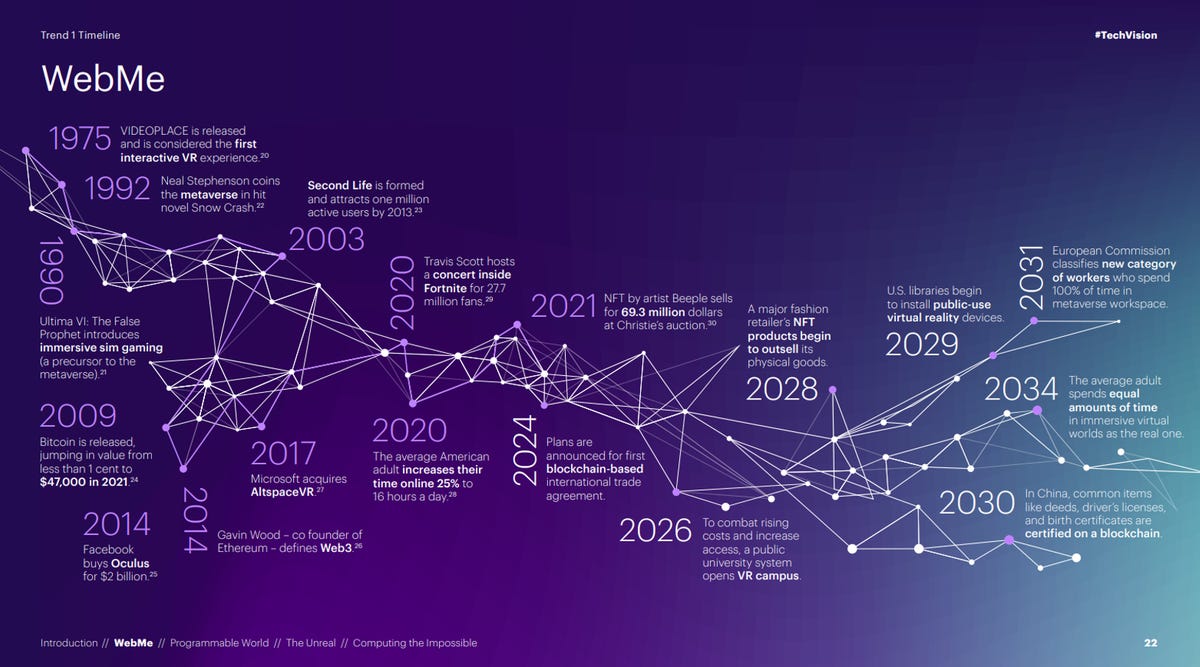
Programmable world our planet, personalized
We’re building the next version of the physical world. The report notes that 92% of global executives agree that leading organizations will push the boundaries of the virtual world to make it more real, increasing the need for persistence and seamless navigation between the digital and physical worlds. And 74% of global executives report the number of IoT/edge devices deployed in their organizations significantly or exponentially increased over the past three years.
The report suggests full stack programmability. Beyond the fundamentals of cross-device interactions, privacy, and security, becoming a leader in the programmable world will require wide-ranging exploration, experimentation, and development across the Connected, Experiential, and Material layers. Companies need to start working toward “full stack” programmability today.
“The arrival of the programmable world will be the most disruptive turning point for people and businesses in decades. We’re about to live in environments that can physically transform on command, that can be customized and controlled to an unprecedented degree, and that can change faster and more often than we have ever seen before,” Technology Vision 2022 Report.
The questions business leaders should be asking:
- Is your enterprise poised to innovate in the programmable world?
- How could your business fundamentally change in the programmable world?
- Is your enterprise prepared for the challenges of the programmable world?
The unreal: Making synthetic, authentic
According to the report, we are entering a world with synthetic realness, where AI-generated data convincingly reflects the physical world. In this world of synthetic data, images, and chatbots, as well as augmented and virtual realities, we are forced to face the questions of what’s real, what’s not, and perhaps more importantly, when do we care? The report notes 96% of global executives agree that their organizations are committed to authenticating the origin of their data and genuine use of AI. And 65% of global consumers lack confidence in recognizing or identifying deepfake videos or synthetic content. According to the FBI, email-based scams alone cost businesses, more than $2 billion over a five-year period — and the growing believability of these scams may very well cost them more. 73% of global consumers think that the number of times they interact with artificial intelligence (AI) or AI-generated content will increase over the next three years.
What is a Metaverse?
• digital currency
• marketplace / e-commerce
• NFTs
• gaming
• digital assets
• natural language processing
• digital humans
• online shopping
• workplace
• social media
• social entertainment events
• infrastructure https://t.co/A7kyzfiVL5 pic.twitter.com/SyJ2EdLdH7
— Vala Afshar (@ValaAfshar) March 16, 2022
Business leaders can better prepare for this unreal future by asking the following:
- Is your enterprise prepared to take full advantage of unreal world technologies?
- How are you protecting your organization and your customers from malicious use of the unreal?
- How will your enterprise shape the unreal world?
Computing the impossible: New machines, new possibilities
According to the Tech Vision 2022 report, 69% of global executives report quantum computing will have a breakthrough or transformational impact on their organizations in the future. “The evolution of this new generation of machines follows a pattern we’ve seen before: Rapid growth drives demand for new tools which then transform industries by solving their fundamental problems,” Tech Visions 2022.
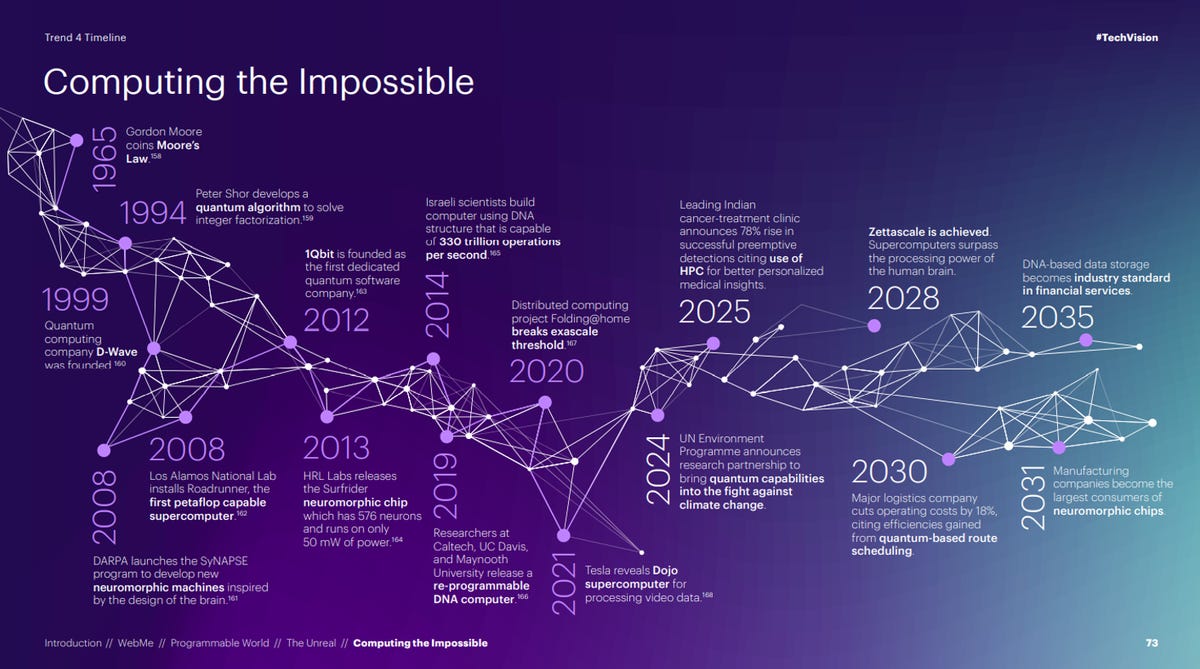
The Accenture Technology Vision 2022 report is an incredibly comprehensive look at the Metaverse and the driving underpinning technology trends. The report highlights several companies across multiple industries that are leveraging the Metaverse Continuum to create a new business model and innovation opportunities.






















